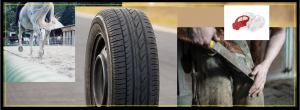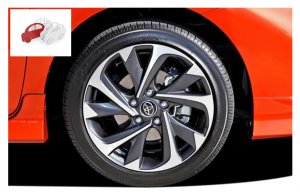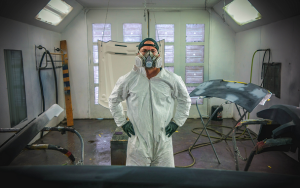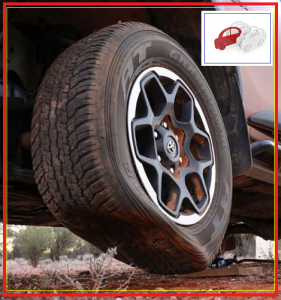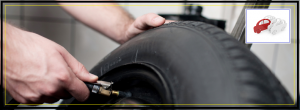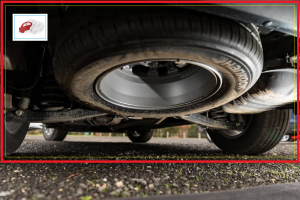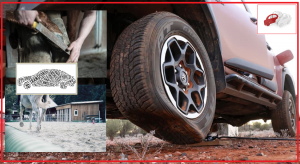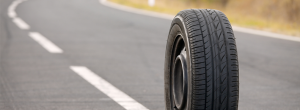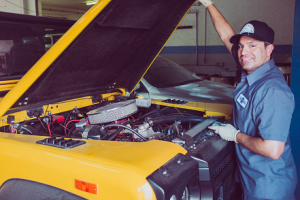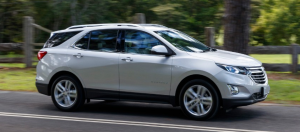DABAS blog post: mid-November 2018,
Caring for your car’s tyres:
Hello readers, DABAS hopes you backed a winner in this year’s Melbourne Cup, thus having a successful spring carnival’s punting . . . It’s common knowledge that most horses punted on are well cared for and very well trained and “wear special shoes”, thus hopefully a safe bet during the recent Melbourne Flemington spring carnival. Just like horses wear special “well maintained, inspected and changed shoes” to be a safe bet, any type of car – your car – needs its special shoes – “its tyres” – well cared for, maintained and replaced when needed, to continue being a safe safety bet for you; your car occupants; other road users’ safety, including pedestrians and cyclists.
Just as horse folk say – no foot, no horse, car folk could say a tyre uncared for can equal no car. With that in mind, in this DABAS blog let’s take a few steps back from looking at the month’s best brand-new car deal and have a general look at care of your car’s tyres – often overlooked, and unfortunately at times uncared for, leading to potentially a domino effect on your vehicle’s occupants’ health and safety, repairs to your car, and other people’s property. By taking care of your car’s tyres, they will help take care of your driving safety you when you need them most.
We hope you find it an interesting read whilst shining some light on the care of your car’s tyres – providing some useful “general-in-nature” information to help with your car tyres’ care, safety upkeep and maintenance.
If you would like DABAS’s assistance buying a car, please click here.
Here we go
Are you aware that your very life depends on the relatively tiny patch of rubber that is the contact between your car’s tyre and the road surface? It doesn’t matter how many of the latest 2018/19 modern safety feature acronyms carmakers fit on today’s modern hi-tech cars, if the car’s tyre/road contact patch isn’t at its optimum, the effectiveness of systems like ABS brakes and anti-skid systems etc. are all reduced dramatically. Tyres provide a vital link with the road; tyres that are properly maintained give cars the ability to steer, brake, corner and accelerate safely and smoothly; they also help determine the fuel economy modern motorists value so highly, but very importantly, as mentioned, they hopefully keep us safe and out of trouble. Did you know that a five-minute tyre check can reduce wear, save fuel and even save lives while saving money and protecting yourself and loved ones?
Please find below some generally quick-and-easy DIY tyre-safety checks to do each fortnight.
Wear Check: Many car drivers don’t realise all tyres come equipped with a wear indicator. Checking this indicator doesn’t take any special training, and it’s the most effective way to determine for yourself exactly what condition tread is in. In the main grooves of every tyre there is a small bar that runs across the tread. That’s your tread wear indicator. It’s sometimes hard to spot; there’s generally an arrow or icon moulded on the tyre shoulder to show you where it is. The top of the rubber bar indicates the minimum legal tread depth of that tyre. The closer the tread is to the top of the bar, the more worn-out the tyre is. Some tyres may not have a tread wear indicator on their shoulder, but a visual inspection will reveal that part of the tyre’s tread condition.
A tyre wear check is as simple as looking at all four tyres. First things first: turn your car’s steering wheel to full lock to check out the front tyres; you may need to kneel or squat to inspect the rear tyres of the car. Make sure you check every tyre thoroughly, depending on the type of car and its intended purpose; every tyre can wear differently. Uneven tyre wear often means a wheel-alignment issue that you will need to investigate with your VACC mechanic’s recommended tyre dealer. If your tyres or a tyre are wearing out or are just about level with the wear indicator, it’s time to replace them. If the shoulder sections of the tread are smooth, the tyre will also need replacing.
Pssst; free tip – note- keep in mind when buying a used car, uneven tyre wear can also be a hint of previous accident damage.
Tyre Damage: Melbourne’s roads are a magnet for all types of assorted debris. Nails, screws, roofing tacks, metal shards, fractured glass and sharp-edged rocks lie in wait Melbourne and Australia-wide, often working their way into a car’s tyre without the car’s driver noticing. Tyre penetration by a screw or road-debris can cause irreparable damage to a tyre sidewall making the tyre useless, even though the tread is hardly worn; a tyre with a sidewall penetration cannot be repaired satisfactorily. A nail or screw through a tyre not only causes gradual deflation, but the object’s point may damage the interior wall as the tyre flexes against it, leading to the eventual fracture of the tyre’s carcass.
There are also potholes, broken edges and other road hazards that can do severe damage; most are clearly visible, so avoid driving over them whenever possible.
VACC mechanics and tyre technicians recommend that your tyre sidewalls and treads are checked thoroughly. Look out for cuts, gouges, bulges and anything that shouldn’t be there. If you see something like a nail or screw embedded in the tyre carefully take it to a VACC recommended tyre retailer or VACC service mechanic and let them remove and fix it. Tyre plugs should only be used for emergency repairs. If you must use one, drive to a VACC recommended tyre specialist as soon as you can and have them inspect and repair the tyre. Air loss and flat tyres are situations everyone wants to avoid, but they aren’t the worst outcome. Of more concern is drivers heading out on a road or busy freeway with a tyre that is about to fail or blow-out. High speed, tight lanes, close quarters, then a failed or punctured tyre occurring is an easily avoidable recipe for a disaster. If you notice a puncture or unusual bulging, you should contact your closest VACC mechanic’s recommended tyre dealer.
Tyre pressure: A tyre pressure check is one of the oldest pieces of tyre advice in the book, and for very good reason. Car tyre pressures naturally decrease as air slowly bleeds through the tyre’s inner liner, meaning regular checks are a necessity. You can’t rely on the way the tyre looks to judge its inflation pressure. It’s something that needs to be properly checked. Fortunately, the good news is that vehicle manufacturers stick a plate or sticker on the door frame displaying that car’s recommended correct tyre pressures. Correct tyre pressure saves fuel, improves on-road grip and increases tyre life. If there’s too little pressure, friction increases, creating uneven wear on the shoulders of the tyre; also leading to increased fuel consumption. Too much pressure and the tyre loses grip and reduces driver control, thus wearing heavily on the middle of the tyre. It is recommended by VACC mechanics and their preferred tyre dealers that drivers do check their tyre pressure fortnightly. For the most accurate pressure readings, the tyres should be cold, so try to check tyre inflation pressures before the vehicle is driven for the day. Pumping up and maintaining the pressure of your car tyres is one of the most important things you can do to ensure your car’s safety.
The best things about checking and maintaining the inflation pressure is that it is easy and it’s free.
Where can you easily check your car tyre pressure? Most service stations have a pump you can use to both check and inflate your tyres. It’s easy to use, it can be done in a minute or two, and there’s no charge. The tyre inflation pump is usually located away from the petrol pumps, so you won’t delay anyone else while you do it, and it usually has signs identifying it. If you’re not sure, you can ask the service station attendant for directions.
When should you do it? As mentioned above tyre pressures should be checked at least once a fortnight, and the best time to do it is when the tyres are cold. Checking the pressures cold gives you the most accurate reading of the inflation pressures; the pressures will climb as the tyres warm up and you’ll then get an incorrect reading if driven beforehand.
What pressure should you use? The recommended inflation pressures are displayed on a sticker attached to your car’s body. It’s usually in the driver’s door opening, but could also be inside the fuel filler cap, or on the inside of the glove box lid. The car manufacturer’s recommended tyre pressures are also shown in the car owner’s manual.
The inflation pressures given are the cold settings and they are usually shown in metric kPa or the equivalent imperial psi. Recommended tyre pressures are given for normal driving and for when you’ve got a load in the boot or when travelling at high speed.
Can I use higher than recommended tyre pressures? The recommended tyre pressures are a compromise designed to achieve the best combination of safety, comfort, handling and braking, and fuel economy. By not following those recommendations, it will affect one or more of those things, so carefully consider the consequences before deciding to set your inflation pressures higher or lower. Setting the pressure too high can make your car ride less comfortably, damage suspension components and increase uneven tyre wear (as mentioned above).
How do you check your tyres? After locating the pump at your service station, check to see what the displayed pressure setting is and reset it to the pressure recommended for your car. Remove the dust caps from the valves on your tyres and slip the hose fitting over the valve stem and release the clasp so that it attaches to the stem. The pump will automatically adjust the pressure to the level you have set, and an audible signal will tell you when it has reached that pressure. Release the clasp and remove the hose from the valve stem and move on to the next tyre. Once you have checked each tyre remember to replace the dust caps; they’re there to keep dust from getting under the valve and causing a leak. Valve caps also prevent road debris from damaging the valve, which could make it impossible to refill your tyre.
Note, don’t forget to check the spare tyre is correctly inflated, in good condition and ready to use if you need it.
Are the service station gauges accurate? you ask. Service station gauges can generally be relied on, but unfortunately, they are subject to misuse, vandalism and abuse, so they can vary from station to station at times.
Psssst – While the tyre pump is doing its job, this is a a good time to get down and inspect your tyres for wear or damage to the tread and sidewall
The load ratings: The speed and load ratings for your tyres should match those of the original tyres that came with the car; you should never fit a tyre with a lower speed rating or load rating than the manufacturer recommends for the car. Fitting a tyre that is not approved by the manufacturer may also cause bodywork damage, including dangerous suspension and steering interference. A tyre that has been damaged by rubbing against the bodywork is most likely to have torn patches on the tread, or be heavily scored from jutting or damaged metal, thus making it very unroadworthy, unsafe, and thus dangerous to all road users.
Some additional points to note when caring for your car tyres:
Striking a kerb can cause an internal rupture to the tyre, hitting kerbing will also damage and weaken the outer sidewall. An internal rupture can result when a tyre hits a kerbstone or an object in the road; although no damage may be visible on the outside, eventually the tyre fails. Note: if a tyre is continually scuffed or bumped against the kerb during parking, sidewall abrasion can be so severe as to expose the casing cords. No matter how good the tread, the tyre is useless.
Separation of tread? Tread separation may be due to under-inflation, which causes severe heating of the tyre shoulder. Other causes of tread separation may be deterioration due to age, oil or tar trapped in the tread, or rusting of steel belts under the tread.
Driving on a flat tyre will cause the carcass to break up; prolonged driving on an under-inflated tyre causes crushing and distortion of the sidewalls, with internal damage to the cords thus the sidewall may eventually fracture and separate from the shoulder.
Fuel or oil on a sidewall will weaken the tyre. Note: spilled fuel, oil or solvent etc. in a spare-wheel well can soak the rubber until the sidewalls appear smooth and wavy, and the tyre is so weakened that it cannot hold air, and so fractures.
Ozone in sea air can at times cause crazing – a network of small cracks – on the sidewalls. When tyre sidewalls are crazed by high concentrations of ozone in sea air, the rubber is weakened and the tyre can fail. Strong sunlight hardens and cracks tread and sidewall rubber over a period of years. Cars or caravans parked near the sea for any length of time should have their wheels covered.
Pollution in the atmosphere and on road surfaces particularly in cities is harmful to tyres. Oil, tar, diesel fuel, petrol and paraffin all tend to soften the rubber, and may penetrate it quite deeply if not removed quickly. Clean them off with water and soap, or a mild detergent, such as washing-up liquid.
Free tip – make sure the wheels are balanced by a qualified automotive tyre technician after any tyre repairs.
At DABAS we know that buying a car to suit your needs can be one of the biggest purchases in your life; we hope this intended to be “general-in-nature advice and information” blog page has provided some helpful assistance for you in looking after your car’s tyres. We look forward to having a chat when the need arises for you to update your car; to assess your personal car-safety requirements and buying needs to suit your lifestyle.
And importantly your set specified budget!
Whatever roads your life journey takes you on,
DABAS can help you find a car to travel those roads.
When it comes time to update your car DABAS is aware of some things to consider and to be aware of when updating, trading in or privately selling your old car at a LMCT used-car yard, including the special trade-in incentives offered on drive-away-no-more-to-pay deals obtainable – at times – within leading brands’ Melbourne LMCT used car dealerships.
These will be discussed upon your transition to becoming a client of DABAS.
To see a self-evaluating check list – is it time to update your car – please click here
To contact DABAS to discuss your car-buying needs, please click here
To see some interesting things to consider when buying a car, please click here
To see 3 things to consider when moving on from your old car, please click here
For DABAS past blog topics: see our archived index, please click here
For a step-by-step example of a DABAS car-buying journey, please click here
Thanks for visiting DABAS’s website and blog: Have a great day, Cheers, Tim.
Please note: All information mentioned in this blog post is to be considered as a very general-in-nature summary; information mentioned in this blog page may be outdated or superseded by the time of your reading of this blog page.


